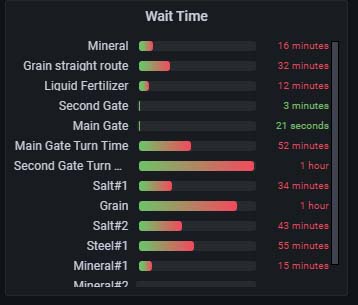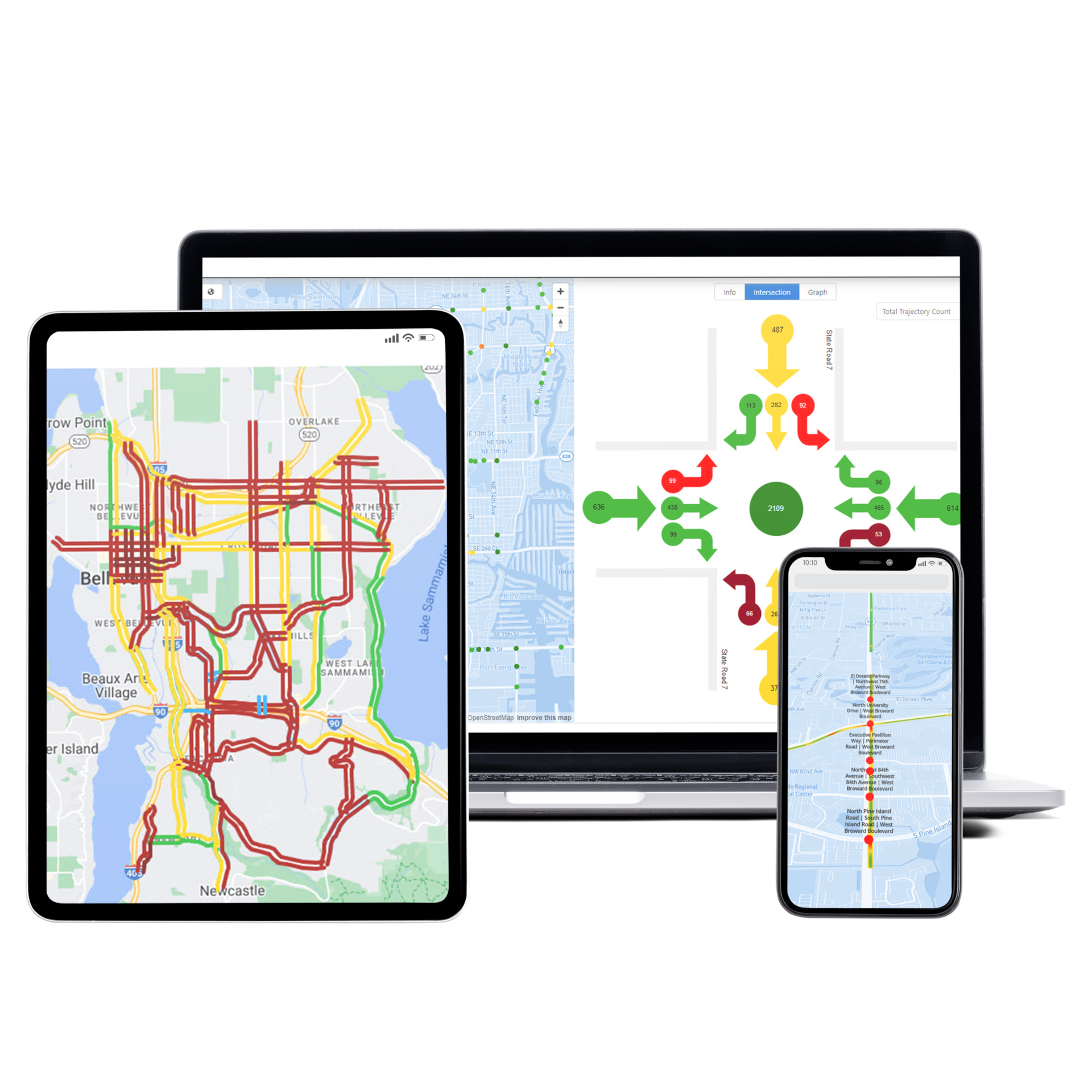Enabling Data-Informed Decision Making At Port
Port traffic management informed by the real-time monitoring of truck movementsPort of Trois-Rivières

OVERVIEW
Trois-Rivières is located in the province of Quebec, Canada along the St. Lawrence River which feeds in from the Atlantic Ocean. It is a cultural center and harbor city, known for the arts, theater, and cultural centers.
PORT DE TROIS-RIVIÈRES
Established in 1882, the Port of Trois-Rivières is a critical player in regional, national, and international development for multiple industries including aluminum, forestry, and agrifood.
As one of 17 ports across Canada, it is strategically located between Montreal and Quebec City. The Port of Trois-Rivières receives 55,000 trucks, 11,000 railcars, and over 250 merchant and cruise ships each year from over 100 ports located across 40 countries around the world. The port also processes 3.3 million metric tons of goods each year and has an annual economic impact of nearly $2.9 billion, supporting over 2,000 direct, indirect, and induced jobs.
Company Name: Port of Trois-Rivières
Date: May, 2021
Website: https://porttr.com/en/
THE CHALLENGE
Ships are carrying more cargo than ever before, as a result, ports are investing heavily in cargo terminal capacity, making ports busier than ever. An increased amount of incoming freight creates longer wait times for trucks, and consequently, the port faces increased gate-times and turn-times, port-city traffic congestion, and Greenhouse Gas (GHG) emissions.
These issues compelled port authorities to search for new ways to manage traffic congestion near and within the port. Porth authorities were considering a truck traffic monitoring system that could provide valuable decision-ready data regarding truck traffic movements. In addition, a traffic monitoring system could provide actionable information and Key Performance Indicators (KPIs) which can help improve truck movement and reduce overall port congestion.

THE SOLUTION
SMATS installed TrafficXHub sensors at strategic locations throughout the port. These sensors captured Bluetooth Low Energy signals emitted from Bluetooth beacons distributed to the trucks visiting the port. When deploying the sensors, the SMATS team checked the area to find the best locations for available mounting infrastructure and power sources. Depending on the deployment locations, some sensors were powered by solar panels, and the others were connected to the available AC power.
The Bluetooth beacon cards used in this project were distributed to the trucks, attached to the existing RFID access cards or placed inside the vehicle. The card used Bluetooth Low Energy (BLE) technology which provided an advantage of low-cost and multi-year battery life.
Data monitoring algorithms located the trucks at the Port of Trois-Rivières and measured the times spent idle, en route, and between links. In addition, an origin-destination analysis tool was built to track the movement patterns of trucks inside the port, from the port gates, to the scales, offices, product storage site, and exits.

THE RESULTS
The SMATS hardware and software solution provided greater visibility to the port’s truck activities with various performance measures for operational and long-term planning, as well as decision-making.
This information supported the port’s strategic (optimizing asset acquisition), tactical (optimizing use of existing assets), and operational (optimizing real-time activities) decisions to improve the performance of the port and its terminal services.
Summary of Results:
- The sensors demonstrated reliable performance throughout the year.
- The Beacon cards were captured in the travel route by the sensors.
- iNode measured the travel time and wait times with 92% accuracy.
- iNode showed traffic patterns and routes taken by trucks.
- iNode provided real-time locations of the trucks within the port.

SMATS FOR THE PORT OF TROIS-RIVÈRES
With SMATS sensors and beacons, the Port of Trois-Rivières was able to achieve their project objectives. The solution successfully monitored truck traffic and provided key performance measures, including truck queue times at different routes, pick up and drop off idle times, and movement patterns for real-time decision-making and historical analysis.
The technology included the installation of SMATS TrafficXHub sensors at strategic locations at the Port. Additionally, SMATS’ data analytics cloud application, iNode, was used to process the sensor’s raw data, including the beacon’s MAC addresses and signal strengths in real-time.

REACH OUT TODAY
The first step toward a better traffic management solution!
